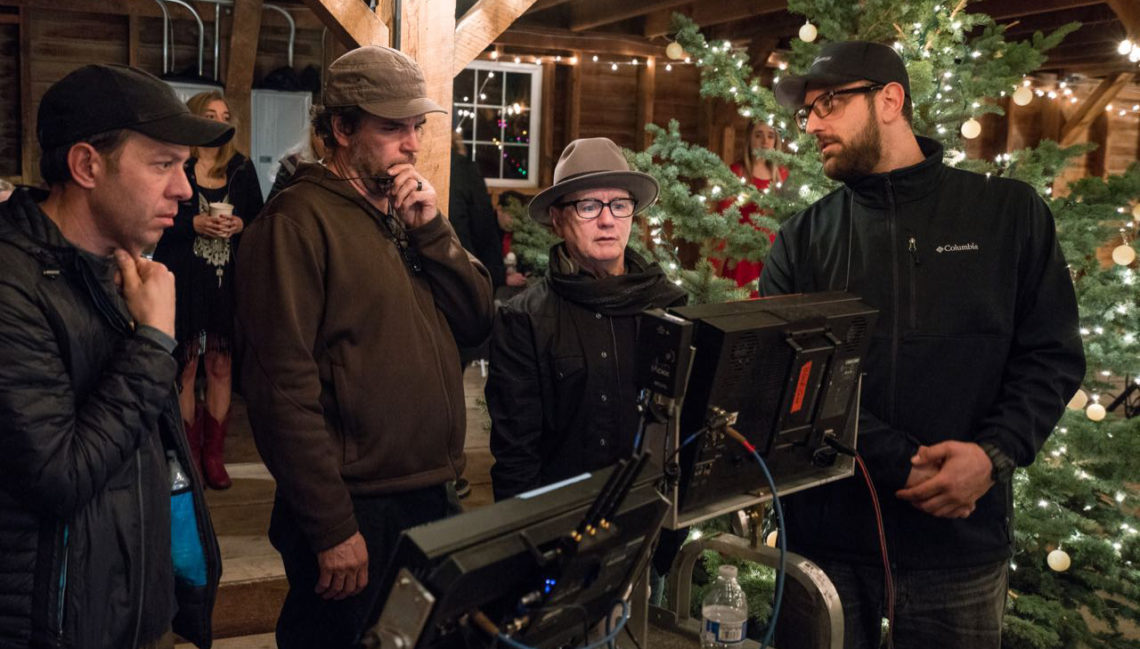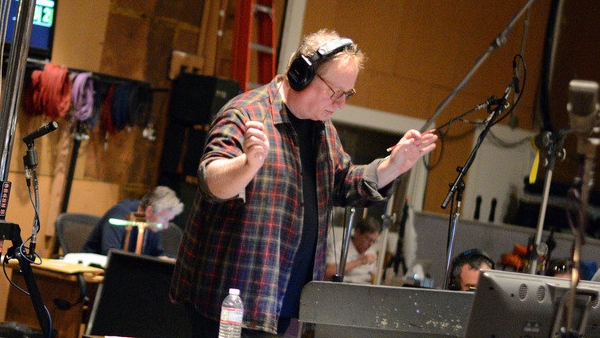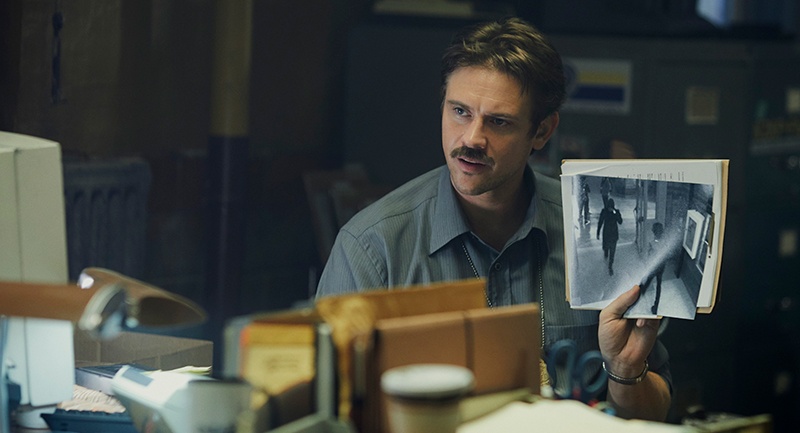Last year, the Glenn Withrow directed family drama, The Last Champion, was released by Redburn Street Pictures. It tells the story of John Wright (played by Cole Hauser), a scandal-ridden ex-Olympian who, following his mother’s death, returns to a hometown that has not forgiven him. It’s an emotional sports movie, and we’re glad to see one about wrestling. In a story about facing the past, it’s also about finding the hero in all of us.
We spoke to cinematographer Rich Schaefer about his experiences on the uplifting film. Schaefer used to wrestle, so he was able to bring some personal expertise to the shoots and help Glenn Withrow get some very legit looking sequences. Also, this takes place in Eastern Washington and there’s a lot of stunningly beautiful wintry vistas that Schaefer was able to capture. Oh, and Rich got to meet his hero: wrestling legend and 1972 Olympic gold medalist Dan Gable (pictured below). We get into all that and more!
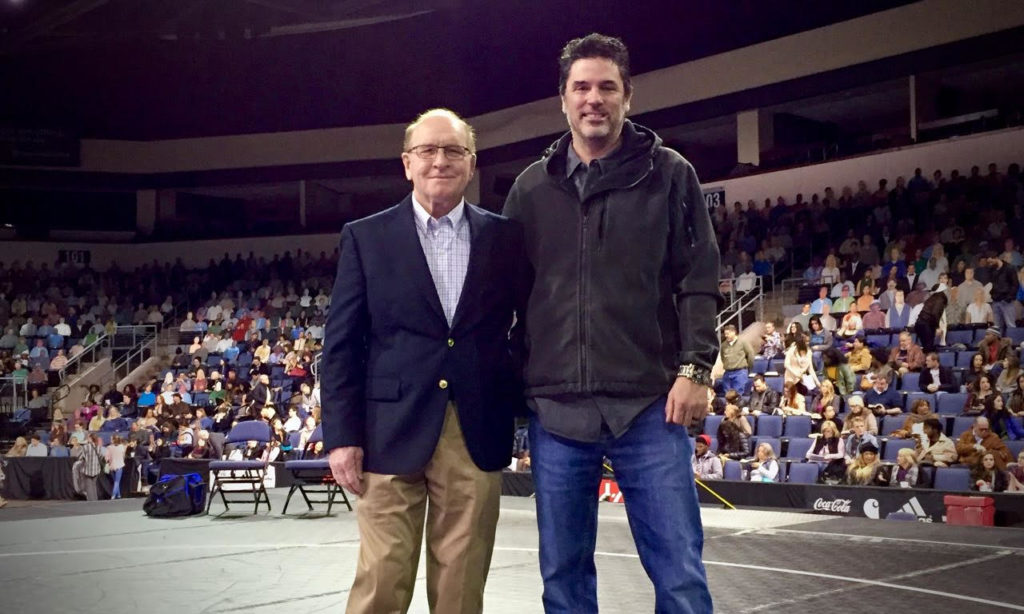
GoSeeTalk: The film has several wide-open vistas that are striking, so how do you set up a shot with a scope like that?
Rich Schaefer: It was really important to the director Glenn Withrow and myself to capture the beauty of our locations in Eastern Washington in the winter; it is so beautiful and charming. We do have a lot of grand vistas; they are very much inspired by the locations themselves. We knew we had to establish and get vistas for some of our key towns where the story takes place, so we would schedule those shots, but we always kept our eyes open for mother nature’s magic. I brought John Barret on as my B-camera operator and licensed drone guy. So, we always had the chopper in our back pocket. We would send him to fly whenever anyone saw something amazing.
I have learned, unfortunately, that taking photos shooting into the light, specifically open windows, yields some terrible results. What are the standard ‘dos and don’ts‘ you have developed over the years? What are the specific things you always do on every shoot?
You are right, shooting into windows can yield poor results unless you have the resources to add light and balance the shot. With a lighting truck at my disposal, I actually look for those windows, they provide highlights or bright spots enabling me to shape the light on the subjects in the darker foreground. For me, in general, step one in cinematography is what I call “Slicing” the shot with the lens and camera – really taking a few moments to craft the image with camera and lens position and settings to get the look, mood and tone needed. Step two is to add or shape light if it is even required. Sometimes when you really craft your shot, lighting becomes much more minimal, and you can film much quicker. On The Last Champion, we usually shot 7 to 12 pages a day on location, so shooting smart was very important.

As a high school wrestler, I have to say the gymnasium scenes felt legitimate and you captured it well. What kind of research do you do and what kind of reference do you pull for that or any other shots?
The wrestling was so so important to us. I was a wrestler in high school. I was on the Bullis High School 1985, 1986, and 1989 prep school, national winning teams. The director Glenn wrestled, and so many of our crew and cast also wrestled. We were relentless on the wrestling performances. We would often stop and say we don’t believe it yet, it’s too slow or not hard enough, or they would not do that there… I have to give our cast a lot of credit, especially Sean and Casey, who wrestled in this film. It was not fake, they really wrestled. They did a fantastic job. I do have to say, it was an honor to work with legendary Dan Gable in this film. He has been a hero of mine.
What was the one thing about this project that made you want to get on board?
I really liked the story, the cast and the director Glenn Withrow. I was drawn to Eastern Washington and the locations that were selected. I saw a great opportunity to do some great storytelling about a sport that I love so much! I was immediately on board to film The Last Champion.
There were some nice scenes where the focus pull is subtle, but still quite remarkable. How do you achieve that? And is there a specific distance that the subjects need to be in to make it work?
On The Last Champion, I wanted to shoot the movie with a very cinematic shallow depth of field. The focus pulling was tricky on this film. I really made it hard on my focus pullers Carlos De Varona and Isaac Guy because I was electing to shoot so shallow. It looks beautiful, but it is hard on those guys. We filmed it with Alexa cameras and Cooke lenses almost always wide open at T2. We had wireless focus control and an ultrasonic range finder to assist with focus. The rack focus pulls are tricky, but we set the shots with marks in rehearsal. The toughest focus pulling was actually during the wrestling scenes because it is so fast, and the wrestlers are moving all over the place. I do feel if the framing and focus are struggling to follow the action, it actually elevates the action and makes it feel even more intense and dynamic.
I expect the time of day can determine and direct how you set up for a shot, but what about shooting in cold temperatures? How does that factor in and does light react differently in the snow or when moisture is in the air?
Time of day is always a consideration when setting up a scene. It needs to fit the story, but for me, it also needs to look good. The snow is very reflective. Sometimes that is helpful, but sometimes it’s too much, and we need to knock it down with negative fill. The fight scene was filmed on a very very cold night. It got down to -18F that night. Towards the end, we were struggling to keep the camera gear working. Literally, it got so cold the lenses would stop turning. We would have to heat them up between takes with hair dryers. And then, the LCD monitors that are mounted on the cameras for the operators to see started to freeze. They looked like a thermal heat-seeking image, not a broadcast image. I feel like we finished that scene just in time before the equipment just quit on us due to the cold.
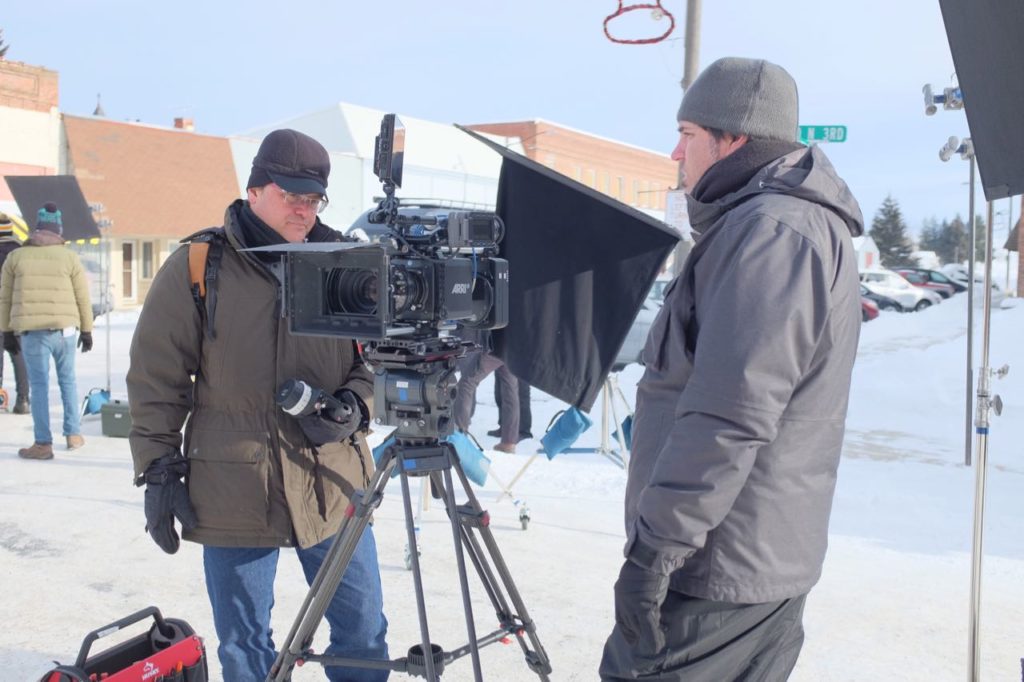
There’s a scene in the bar with Melinda that’s full of smoke. There were also a good number of late 70s and early 80s films, specifically those of the Amblin era, that looked like there was a perpetual smoke that enveloped the set. How is that achieved?
I love that you saw that. We intentionally used smoke to create that atmosphere and tone to motivate Melinda’s tragic character in the bar. We actually used atmosphere on most of the film. I think it also very much enhanced the church scenes. These days we use audience and performer safe haze machines and fluid. Depending on the scene, we will waft it smooth or leave it puffy like in the bar.
Do you work with the editor before you shoot so that they’re aware of what you want to capture and they can consider it when cutting scenes together?
We were lucky to have Rob Jaeger, the editor, on for some of the filming days, but it is not usual. He was working as we filmed and would give feedback, but it was really up to the director Glenn Withrow, myself, and our script supervisor Sean to make sure we had all of the coverage we needed to tell a great story.
Are you involved in post and offer any input in color correction?
I am always concerned with the look of the film all the way through delivery. When preparing to shoot The Last Champion, I was really inspired by Jeff Croneweth and David Fincher’s movies Gone Girl and Girl with a Dragon Tattoo. I really felt those two films captured a similar tone and style that I loved and that would support The Last Champion story. I pulled lots of stills, and Glenn, the director, and I discussed these looks. I then also lobbied to have Fincher’s colorist Ian Vertovec from Light Iron color our film. He did, and it looks fantastic!
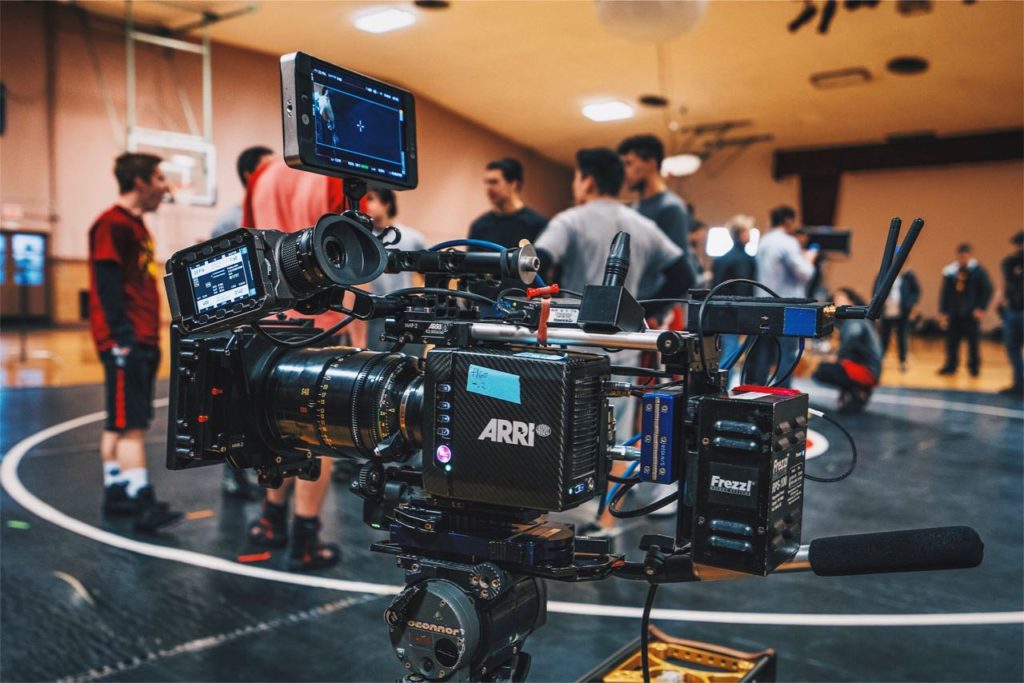
What was the most fun shot to set up on this film?
For me, the most fun scene to film was the holiday party in the barn scene. It was a blast to shoot that piece of story with most of the cast and so many extras in such a beautiful location. I was really happy with the dressing that Chris Tornow, John Dexter, and the entire art department installed and how our lighting all worked together. It was really pretty and magical.
What is your favorite part of a shoot?
I love the entire process of shooting. I love the imagining, previsualization, thinking, and planning of prep. I love filming with the cast, the crew, and all of the creativity involved from so many. I love the feeling after a days work that something good was created, or just that we collectively slayed the dragon. I love working with directors and being their right-hand person that makes their vision a reality on screen. I also love putting a job together in such a way that the producers are actually profitable, and they will stay in business and potentially hire me again. Most of all, I love the fantastic cast of characters that are the crew and cast. It is so much fun to see such a wacky, creative cluster of professionals make something really great!
How do you set up for a static shot vs. a dynamic shot like any of the wrestling matches?
To me, the story and what is happening in that moment of the story, is what dictates how a scene should be photographed. On The Last Champion, we had some stunning subtle, and understated performances, especially from Cole Hauser. I feel if we added movement or energy to the camera work, it would conflict with what Cole was doing. Many times I felt the scene’s performance, and camera work should breathe together. In stark contrast, the wrestling battles were quite the opposite. I really wanted to immerse the viewer as close to the action as possible. I wanted the viewer to see a wrestling bout like I did when I wrestled.
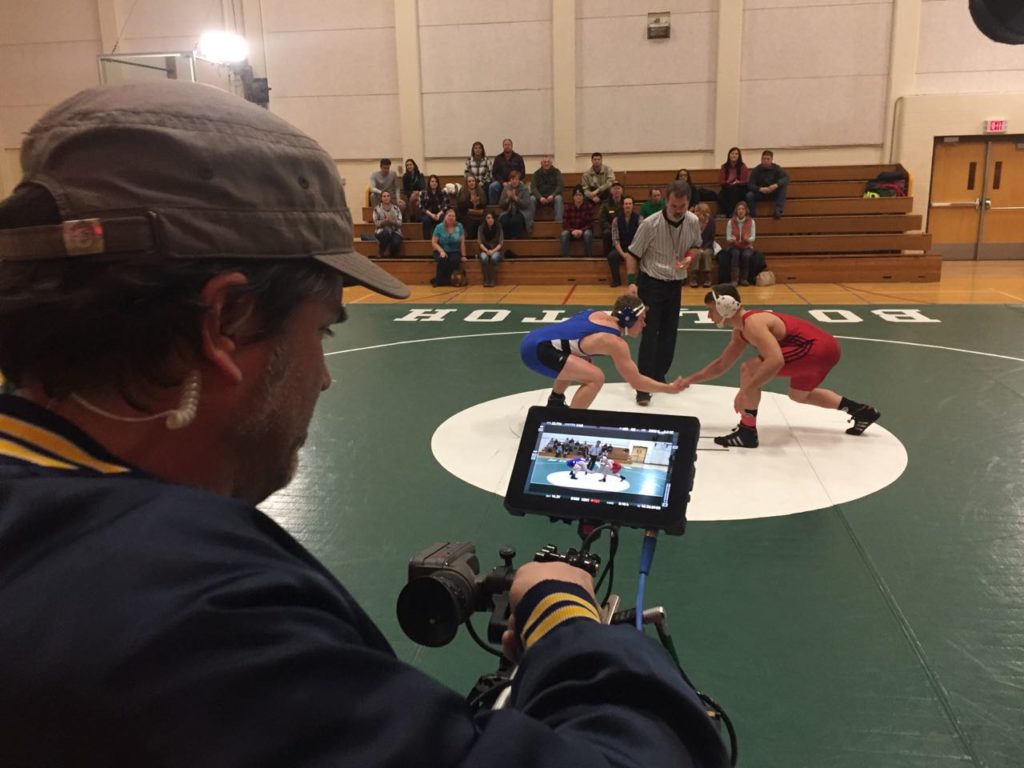
How beneficial are having drones to help shoot a scene? Are aerial shots still captured with cranes or helicopters these days?
I think there is a need for drones, cranes, and helicopters these days. Drones have become very useful, maneuverable, and affordable. I am sure they have taken work from real helicopters. But helicopters are costly to rent, fuel, and then put a stabilized camera system on. But they can do things that most drones can’t do. They have greater speed, distance and can stay in the air much longer than drones. Cranes are an interesting tool. They have evolved a lot since the early camera cranes. The techno or extending cranes and now jibs have really made that tool even more useful. The extending boom takes the inherent arc out of the traditional cranes function. Cranes and jibs have one huge advantage over choppers and drones, you can shoot dialogue with them.
The Last Champion is currently on Amazon Prime. For more information on Richard Schaefer’s work, please visit www.richschaefer.com.
A former championship wrestler is forced to face his past when he returns to the hometown he left in disgrace twenty years earlier. #TheLastChampion starring Cole Hauser and Hallie Todd.
